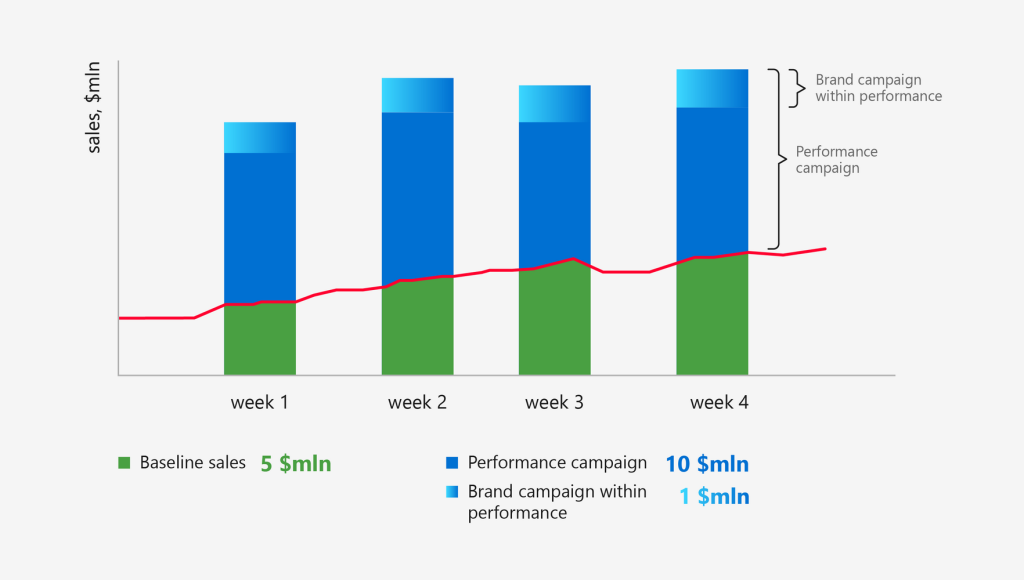
|
The Importance of Brand Campaigns in a Performance-Driven Advertising Landscape
Advertising campaigns have long been a staple of the marketing world, but the way in which they are executed has evolved dramatically over the years. While performance campaigns have traditionally been the focus, more and more companies are realizing how important brand campaigns are in driving long-term growth and profitability. In this article, we will explore the differences between these two approaches to advertising, the influence of brand campaigns on performance, the path to profitability using brand campaigns, tips for launching a successful brand campaign, and projections for their future.
1. Brand vs Performance Campaigns
Before diving into the details of brand campaigns, it is important to understand the differences between the two types of campaigns. Brand campaigns focus on building a company’s reputation and creating a positive association with its products or services. Performance campaigns, on the other hand, are designed to generate immediate results such as leads, clicks, or sales.
One key difference between the two is the use of advertising instruments. Brand campaigns tend to rely on television ads, print ads, and outdoor advertising, while performance campaigns tend to utilize digital channels like search engine marketing, social media advertising, and programmatic display advertising.
Cost is another major differentiating factor. While performance campaigns usually have a lower cost per impression or click, brand campaigns often require a higher investment to achieve the desired reach and frequency. However, their long-term benefits can outweigh the immediate results and lower costs of performance advertising.
In terms of efficiency measurement, brand campaigns typically focus on such metrics as brand awareness, sentiment, and recall, while performance campaigns focus on return on investment (ROI), cost per acquisition (CPA), and conversion rates.
A comparison between them is also presented in the table below.
| Brand Campaigns | Performance Campaigns | |
| Focus | Building company reputation and creating positive association with product/services | Generating immediate results, such as leads, clicks, or sales |
| Advertising Instruments | Television, print, outdoor advertising | Digital channels like search engine marketing, social media advertising, and programmatic display advertising |
| Costs | Higher investment | Lower cost per impression or click |
| Measurement Efficiency metrics | Brand awareness, sentiment and recall | ROI, CPA, conversion rates |
2. The Influence of Brand Campaigns on Performance
While performance campaigns are designed to generate immediate results, brand campaigns play a crucial role in driving long-term growth and profitability. They can influence performance campaigns by improving brand recall, brand sentiment, and awareness, which in turn can lead to increased conversions, clicks, and sales. And the benefits do not stop there, as people might also be willing to pay more for a product when it’s made by a company they know well and trust, as a result the product margin increases. And we are not talking just about luxury items, it goes for ordinary things that are in the middle price category too. If properly promoted, they get recognized and chosen among numerous similar products despite being slightly more expensive.
The effectiveness of brand campaigns in driving performance can be calculated using the marketing mix modeling (MMM) approach. MMM is a statistical method used to analyze the impact of marketing activities on sales. By analyzing historical data, MMM can determine the contribution of different marketing activities, such as brand and performance campaigns, to overall sales. Here you can check out a detailed comparison of three AI-based MMM tools and find more general information on MMM and its capabilities.
This analytics and measurement software will also be a great help to marketers when they need to justify large investments to the finance department that want to see exact numbers and proof of effectiveness instead of some metrics that are irrelevant to them like brand awareness.
For example, let’s say a company invested $1 million in a brand campaign and saw a 10% increase in brand awareness. Subsequently, they launched a performance campaign that generated $10 million in sales. Using MMM, it can be determined that the brand campaign contributed to $1 million of the $10 million in sales, representing a 10:1 return on investment.
Contribution to sales

3. Path to profitability using brand campaigns
Brand campaigns play a significant role in shaping a company’s image and, as a result, their valuation. Let’s look at three companies that have launched successful brand campaigns in the past ten years and see how they influenced their profitability.
- Warby Parker: Warby Parker, a glasses and eyewear company founded in 2010, launched a campaign that emphasized their commitment to affordable, stylish glasses. By partnering with various social media influencers and promoting the message through Instagram and Facebook, they created a loyal fanbase that boosted their sales and led to their valuation reaching $3 billion in 2021.
- Glossier: Glossier, a beauty and skincare company founded in 2014, built their brand around the idea of “skin first, makeup second.” They focused on the natural beauty of their customers and the simplicity of their products. By utilizing social media influencers, they were able to create a buzz and a cult following, leading to their valuation reaching $1.2 billion in 2021.
- Allbirds: Allbirds, a sustainable shoe brand founded in 2015, centered their promotional efforts around their commitment to the environment and sustainability. Their shoes were marketed as being made from environmentally-friendly materials and they emphasized their company’s dedication to reducing their carbon footprint. This message resonated with consumers, leading to their valuation reaching $1.7 billion in 2021.
4. Guide to launching successful brand campaigns
Launching a successful brand campaign can be challenging, but there are several modern trends that companies can use to increase their chances of success. Here are some tips to help guide the process:
- Product placement: Incorporating your product into a popular TV show, movie, or social media influencer’s content can help increase brand awareness and create a sense of familiarity with consumers.
- Lovemarketing: Focusing on creating an emotional connection between the company or product and the consumer can help build customer loyalty and increase customer retention.
- Metaverse: Creating a virtual world or experience can help increase engagement with consumers and create a unique experience for clients.
- Sponsorship of cybersports: Partnering with popular esports teams or players can help increase brand awareness among younger demographics and those who are passionate about gaming.
- Charity: Supporting a charitable cause can help create a positive company’s image and increase customer loyalty.
- Sponsorship of contemporary art: Supporting contemporary artists and their work can help create a sense of cultural relevance and increase brand appeal among those who are interested in the arts.
5. Projections for the Future
The future of brand campaigns looks bright, with several emerging trends that are likely to shape the industry in the next ten years. One trend to watch is the rise of influencer marketing, with companies increasingly partnering with social media influencers to promote their products and build their brand image. Including influencer marketing in your media mix is also an effective way to target exactly the people you want. Companies just need to partner with influencers whose message and target audience is similar to theirs. Audience size is not the main criteria by which to choose a blogger. Influencers with less than 10 thousand followers tend to have a deeper connection with their subscribers, while bloggers with millions of followers can get you more reach and coverage. Choose reliable and responsible influencers that will not ruin your product’s image with their words or actions.

Additionally, companies are likely to continue focusing on sustainability and environmentally-friendly practices, as consumers are growing more and more aware of their impact on the environment. Another emerging trend is the use of virtual and augmented reality to create unique brand experiences and engage with consumers in new ways. Artificial intelligence is another advanced technology that can help you with that. Chatbots immediately come to mind when we talk about the use of AI in marketing, and with the rise of revolutionary tools such as Chat GPT, created by OpenAI, customer service chatbots can be taken to a whole new level especially with the latest version GPT-4. And here you can read more about AI and 10 ways to apply it in marketing.
Also you can use CheckMedia’s automated service. Powered by advanced AI and MMM, our platform can help you validate your plan and optimize your marketing budget. Simply answer five key questions about your strategy, and we’ll provide you with the insights you need to achieve your goals.
In conclusion, brand campaigns play a crucial role in shaping a company’s image and can have a significant impact on their profitability. Even though brand assets are not tangible they make up 20% of total enterprise value, but not all companies take this fact into account or measure it.
By comparing brand and performance campaigns, understanding the influence of the former on the latter, and following our guide to launching a successful campaign, companies can increase their chances of success. With emerging trends in the industry and a focus on creating unique customer experiences and promoting sustainability, the future of brand campaigns looks promising.



